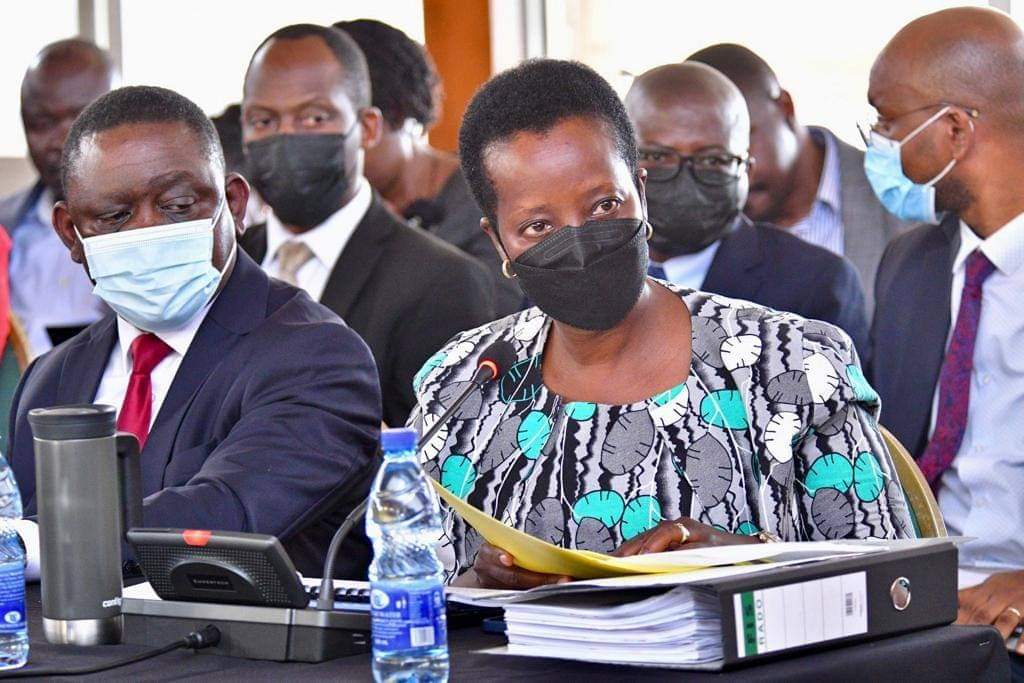By Dedan Kimathi
Uganda National Roads Authority’s (UNRA) Head of designs, Eng. Patrick Muleme today weighed in on the unit cost of road construction in Uganda.
Construction of the 51.4 km road kicked off in 2012 courtesy of a $350 million from Exim Bank of China, repayable in forty years. The road in question comprises two lanes in each direction and two road sections; a 36.94km long section and a 12.68km-long link road.
The 36.94 km route is divided into two; the first section (24.9 km) originates at a point on the Kampala-Northern Bypass and terminates at Abayita Ababiri interchange. The other 12.04km section starts at Abayita Ababiri Interchange and runs along the existing Kampala-Entebbe road.
On the other hand, the 12.68km-long link road starts from the highway at Kajjansi Interchange and runs eastwards before ending at Munyonyo.
For the umpteenth time, the Committee on Commissions, Statutory Authorities and State Enterprises (COSASE) found itself discussing this topic after Committee Chairperson Joel Ssenyonyi expressed reservation.
“So 51 km, the total cost is $476 m because Government brought on table only $126 m, then the Chinese brought $350 m. When you use the Shs 3800 exchange rate it is 1.8 trillion. So Shs 1.8 trillion divide by 51km, so each kilometer cost about Shs 35 billion,” Ssenyonyi exclaimed.
Muleme however dissented saying the problem with many analysts is that they usually analyze the unit cost per kilometer without taking into account the scope of works to be accomplished.
“To understand properly the contributing factors for the project costs, require looking at the actual volume of what has been done. For instance, if you are talking about concrete, what are the total cubic meters of concrete, the stones or asphalt being built? A case in point is that if you look at the Kampala Entebbe Expressway, we have a number of bridges, over three kilometers of bridges which we call blinders that are going over swamps,” he argued.
“Just to give you an indicator, the average cost of per square meter of a bridge ranges between $3000 (Shs 11.2 million) to about $7000 (Shs 26.2 million) per square meter. So if you have over 3 km of bridges that will already give you a major driver of the cost of the project,” Muleme cited.
In the case of Kampala Entebbe Expressway (KEE), he hinted that UNRA went a step further to conduct an independent audit with the help of an unnamed international firm and they discovered there was value for money.
“Based on the scope of what was done, bridges, stones, layers of the road that were being done, UNRA was satisfied by that independent audit report that indeed the project costs were reasonable. And UNRA went a step further to do comparisons with the Nairobi By-pass at that time to see how the costs were comparing and it was established that indeed it was reasonably priced,” Muleme argued.
Toll Collections
UNRA on May 24, 2021 engaged French firm M/S EGIS Road to undertake operation and maintenance services on KEE and on January 8, 2022 tolling officially commenced. Money generated from toll collections is expected to meet Uganda’s loan obligations as far as this project is concerned.
During the hearing on Wednesday, UNRAs Director of Maintenance Eng. Joseph Otim disclosed that they have surpassed the initial amount they set out to collect.
“On average we collect about Shs 2.9 billion per month. Originally we had estimated about 2 billion per month. The traffic was originally estimated at about 14,000 vehicles per day but now we have about 21,000 vehicles per day so that makes the revenues higher. This money is banked in an escrow account and part of that money is used for maintenance of the road and other improvements. Then other money is supposed to go the consolidated fund for repayment of the loan which was used to build the expressway…..” Otim revealed.
